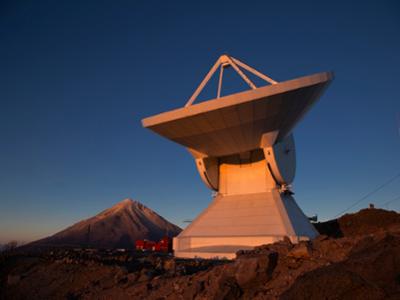Because Hamiltonians Discover Black Holes: Peter Schloerb ’73 … – Hamilton
Expanding knowledge of our universe has led to academic and professional recognition for Peter Schloerb ’73 for his work on the advancement of powerful millimeter-wave telescopes.
“The University of Massachusetts Amherst was sufficiently impressed to name me a Distinguished Faculty Lecturer for 2022 and also awarded me with the Chancellor’s Medal,” Schloerb said.
The honored work began in the ’80s when UMass astronomers like Schloerb realized their 14m-diameter telescope was no longer on the cutting edge. “So, we hatched a plan to get a much bigger one. The project to build the 50m-diameter Large Millimeter Telescope (LMT) began in earnest in the 1990s in a collaboration between UMass and Mexico,” he said.

In 20 short years the telescope was built on top of a 15,000-foot extinct volcano in Mexico. The LMT participated in a major astronomy discovery — the first direct image of a supermassive black hole at the center of a galaxy called M87. A second image of a black hole in our own galaxy was announced this past year.
LMT was one of eight telescopes working on such a far-reaching project with hundreds of scientists called the Event Horizon Telescope. The EHT collaboration has earned many honors, including the Breakthrough Prize in Fundamental Physics.
Schloerb came to telescope work by chance. A geology major at Hamilton, he said he benefited from summer projects on planetary geology using Mariner 6 and 7 pictures of Mars. “After my first summer I got pretty locked into science. Before that I’d never imagined science as a career,” he said.
After graduation Schloerb went to the California Institute of Technology. “I expected to be doing planetary geology, but they assigned me work with a radio astronomer, and I wound up doing radio wavelength observations of planets,” he said.
He earned his planetary science degree in 1978 with a Ph.D. thesis on Saturn’s rings. From Caltech he moved on to UMass Amherst, a career-long association.
Schloerb now spends time researching improvements to the LMT to make it more powerful, and studying the makeup of comets. “There is still some work to be done,” he says.




